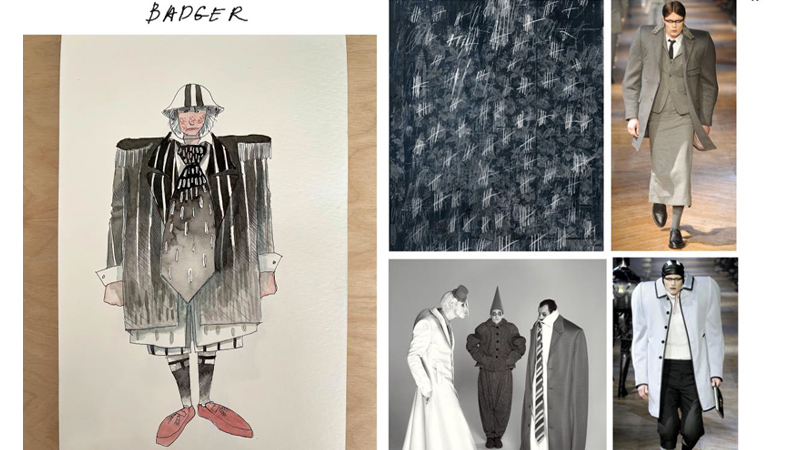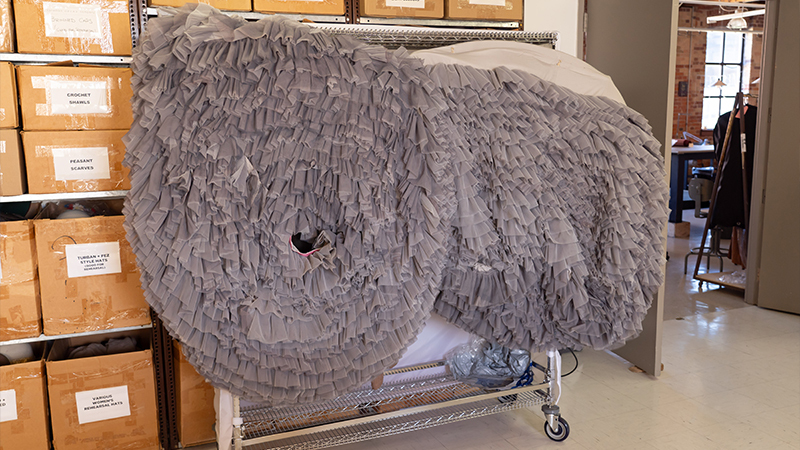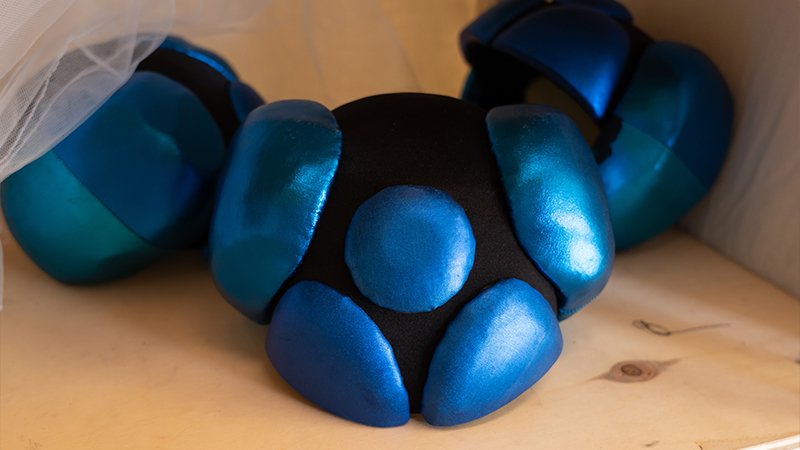Our winter production of Leoš Janáček’s pioneering 1923 opera
The Cunning Little Vixen promises a true feast for the eyes and ears, thanks to its playful score and vibrant, fantastical costumes created by Tony Award-nominated designer Tom Scutt.
Janáček’s tale tells of a young fox who escapes capture in pursuit of freedom, adventure, and love, revealing the delicate relationship between humans and the natural world—and in this opera, it’s the forest creatures who shine brightest on stage.
Join us behind the scenes for a peek at the larger-than-life costumes of
The Cunning Little Vixen, and be sure to book your tickets for a welcome dose of colour this winter!
BUY TICKETS
From ambulatory mushrooms in white puffer overalls and enormous wide-brim hats, to a mosquito whose fearsome stinger attaches to a specially designed helmet, the characters of Vixen present a range of exciting challenges for both the performers and the artists tasked with costuming them.

Three full-time costume staff, two costume assistants, and a handful of additional workroom assistants are responsible for fitting approximately 80 costumes for featured artists, chorus members, children’s chorus, and supernumeraries at our rehearsal and administrative facilities in the city’s east end. Once the production is ready to move into the opera house, a separate team of 10 costume professionals at the Four Seasons Centre for the Performing Arts take over to manage all costume maintenance, repair, and upkeep over the course of the rehearsals and run of performances.

Growing up in the Forester’s house, the young vixen Sharp Ears endures the unwelcome advances of the dog, Lapák, and mistreatment by her captor’s children. Tied up in the farmyard, she tries to convince the hens to fight back against the bullying, chauvinist Cock—to disastrous consequences.
The Cock’s costume, made up of voluminous PVC britches, a bustle for a tail, and yellow heeled leather boots, presents an unusual challenge for the tenor singing this role. The oversized, body-modifying nature of the costume is unusual for male singers; whereas sopranos and mezzo-sopranos have plenty of experience wearing bustles and corsets, there are fewer opportunities for tenors, basses, and baritones to learn to adapt their movements to such restrictive cuts. “It pushes your chest right up,” says COC Head of Costumes Sandra Corazza of the rooster’s bodice. “He’s a grand rooster, so he doesn’t walk, he struts.”

Not to be outdone by their avian overlord, the Hens appear in voluminous, 1980s-style wedding dresses, filling the stage like an expanse of chattering, trembling meringues. The chorus members singing these parts wear dress shields under their costumes, which are laundered after each performance. Vodka spray is used to freshen up the gowns between shows.

After fleeing the farmyard, the Vixen next takes up residence in the Badger’s sett (or den). Here, we’re treated to another oversized costume that plays on the idea of the Badger as forest capitalist: a pin-striped suit with exaggerated shoulders and a hand-painted pattern of tallies on the tie. A particular challenge of this role is that the same singer also plays the Priest—and at the top of Act 2, he has precisely 50 seconds to change from his Badger costume into his human form.

One costume that doesn’t lend itself to quick changes is the Dog, which easily takes the prize for size. A magnificent ruffled grey ball composed of two parts, with an inner structure that sits on the waist and a top section which attaches from above, this costume doesn’t allow the performer much arm mobility.

“It’s a shape that we’ve never really encountered,” explains Costume Coordinator Natassia Brunato. “And with anything that takes up this much space, the singer has to get used to moving differently.” Backstage, this will require wearing an underlayer and getting suited up in the wings rather than in a dressing room—because once it’s on, the costume is simply too large to fit though most doorways.

More sprightly are the insect characters that the Vixen encounters in the forest. Both the Grasshopper and Cricket wear doublets and britches that use digitally printed fabric, with the Grasshopper’s incorporating Art Deco-esque insect imagery.

The Dragonflies, meanwhile, wear iridescent headpieces and costumes fashioned from digitally printed organza.

And an anxious little Frog hops about in what appears to be a shiny green sleeping bag, with an enormous hood evoking a gaping mouth (an interior hat and elastic chin strap keep all that fabric from slipping off).

In the course of the opera, the Vixen falls in love with the Fox; they’re married by the Woodpecker and a brood of cubs soon follows. While the Vixen and Fox are simply costumed in russet harem pants and adjustable headpieces, the cubs appear in boldly patterned tunics of vermillion, amber, saffron and pumpkin orange stripes and hash patterns. Each jumpsuit is hand-painted and unique.
“This is an opera built around the passage of time, so we’re working with costumes for children, adolescents, and adults,” says Corazza. “With kids, fitting the shoes is the hardest part, because kids’ feet grow faster than their bodies.” New measurements are taken at the start of the run and adjustments are made as necessary.

The range of fabrics, accessories and ornamentations in this opera is unlike anything else appearing on our stages this season, and the exquisite craftsmanship of the designs has to be seen to be believed.
Janáček’s The Cunning Little Vixen runs from January 26 – February 16, 2024 at the Four Seasons Centre for the Performing Arts.Buy your tickets now!
BUY TICKETS











_20240704163452_0.png)